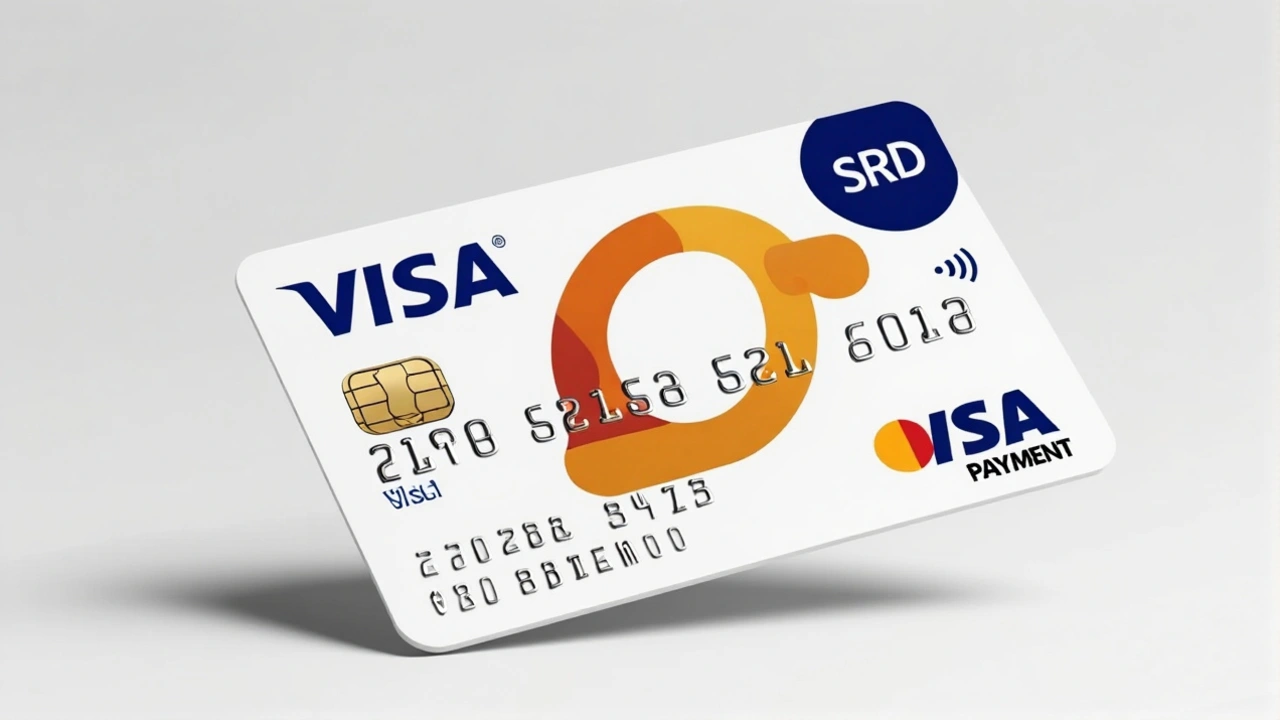When South African Social Security Agency (SASSA) disclosed its October 2025 grant calendar, the headline wasn’t just the staggered payment dates – it was the launch of a mandatory biometric enrollment system for every new applicant.
The agency released the schedule on September 25, 2025, detailing that Old Age Grant beneficiaries will see deposits on Thursday, October 2, while Disability Grant recipients get theirs a day later, on Friday, October 3. All remaining grants – from child support to care‑giver allowances – are set for Monday, October 6. Meanwhile, the Social Relief of Distress (SRD) R370 grant keeps its familiar window between the 20th and 27th of the month.
Payment Schedule for October 2025
Here’s how the calendar breaks down:
- Thursday, 2 October – Old Age Grant
- Friday, 3 October – Disability Grant
- Monday, 6 October – Child, Care‑giver, Foster, and other regular grants
- 20 October to 27 October – SRD R370 grant
SASSA reminded beneficiaries that their money stays in the account until they decide to withdraw, discouraging the “first‑day rush” that has plagued previous months. In practice, that means a retiree in Johannesburg can plan a grocery trip any day after the 2nd without fear of missing out.
New Biometric Enrollment Requirements
Effective 1 September 2025, anyone applying for a new grant must undergo biometric registration – either fingerprint scanning or facial recognition. The move aims to stamp out fraud, duplicate claims, and ghost beneficiaries that have long haunted the system.
“Our new biometric platform makes the grant process more secure, transparent and trustworthy for South Africans,” said Themba Matlou, SASSA’s chief executive officer, during a press briefing at the agency’s Pretoria headquarters.
Matlou explained that the technology will be linked directly to the National Population Register, ensuring that each individual can hold only one grant of each type. The rollout involved a six‑month training program for over 1,200 staff members and the installation of 350 biometric kiosks across the country.
Why the Change Matters
South Africa’s grant system serves roughly 17.5 million people – about one in three citizens. Even a modest reduction in fraudulent payouts can free up tens of millions of rand for legitimate beneficiaries. According to a 2023 audit, fraudulent claims accounted for an estimated R2.3 billion each year.
By coupling biometric checks with real‑time bank verification, SASSA hopes to curb that leakage. Early pilots in the Eastern Cape showed a 12 % drop in duplicate applications within the first two months.
For beneficiaries, the change also brings a sense of dignity. “It feels good to know the system is looking out for us, not just trying to catch us out,” said Nomsa Dlamini, a 68‑year‑old Old Age Grant recipient from Durban.

Support and Assistance for Beneficiaries
If you’re unsure whether you’ve been enrolled, SASSA urges you to call the toll‑free line at 0800 60 10 11 or visit the nearest office. Staff can confirm enrollment status, update banking details, and guide you through the biometric process.
For those without internet access, the agency has dispatched mobile enrollment units to rural districts every Thursday and Friday. These units are equipped with solar‑powered scanners, ensuring that even remote communities can meet the new requirements.
Looking Ahead: Impact on South Africa’s Grant System
The biometric push is just the first step in a broader digital transformation. SASSA plans to integrate blockchain‑based audit trails by 2027, which would make every transaction immutable and instantly searchable.
Analysts say the success of the October rollout could set a precedent for other African nations grappling with large‑scale social safety nets. “If South Africa can do it at this scale, it becomes a template for the continent,” noted Dr Lindiwe Mthembu, a public‑policy researcher at the University of Cape Town.
In the meantime, the October dates serve as a reminder that the grant system is evolving, but its core purpose – delivering a lifeline to millions – remains unchanged.
Key Facts
- Old Age Grant paid on 2 Oct 2025; Disability Grant on 3 Oct 2025.
- All other regular grants on 6 Oct 2025.
- SRD R370 grant window: 20–27 Oct 2025.
- Biometric enrollment mandatory for new applications from 1 Sep 2025.
- Approx. 17.5 million South Africans receive SASSA grants.

Frequently Asked Questions
When will the biometric enrollment start for new applicants?
All new grant applications submitted on or after 1 September 2025 must include a biometric capture – either fingerprint or facial recognition – before approval.
What should beneficiaries do if they miss the October payment dates?
Payments that are not collected remain in the beneficiary’s bank account for up to 30 days. If funds are not accessed, SASSA will automatically re‑credit the account after the window closes.
How does the biometric system prevent fraud?
The system cross‑checks each biometric template against the National Population Register, ensuring that a person cannot hold multiple grants of the same type or create duplicate identities.
Which groups are most affected by the new payment schedule?
Retirees receiving the Old Age Grant and individuals on the Disability Grant see a slight shift forward in the month, while families relying on child and care‑giver grants will receive funds on 6 October, giving them a few extra days to plan expenses.
Where can beneficiaries get help with biometric enrollment?
Assistance is available at any SASSA office, via the toll‑free line 0800 60 10 11, and through traveling mobile units that visit rural districts every Thursday and Friday.


Shubham Abhang
October 1, 2025 AT 20:31Wow, SASSA really went all in with this biometric push, didn't they??? The schedule alone is a maze, but the real kicker is the fingerprint frenzy!!!
First off, forcing every new applicant to get scanned feels like a dystopian horror flick, yet they sell it as "security".
Sure, fraud is a problem-R2.3 billion a year is no joke-but is handing out scanners to every corner of the country the answer???
And those 350 kiosks? Imagine a rural village waiting for a solar-powered box, hoping the battery doesn't die before your aunt's grant arrives.
Honestly, the whole thing screams top‑down control, a classic move to "track" citizens, all while promising dignity-yeah right!
Moreover, linking to the National Population Register sounds great on paper, but what about data breaches? A single leak could expose millions of fingerprints, faceprints, and personal info.
From a tech standpoint, the rollout is ambitious-training 1,200 staff in six months is a Herculean effort, no doubt.
But the timeline is tight; any slip-up could mean delayed payments, and we all know how crucial those dates are for the elderly.
Also, the “first‑day rush” warning? People will still scramble; habit is hard to break.
For those without internet, the mobile units sound helpful, yet their schedule-only Thursdays and Fridays-might not align with everyone's availability.
In the long run, the promised blockchain audit by 2027 could be a game‑changer, but it's still years away.
Meanwhile, the immediate impact is palpable: beneficiaries must navigate new bureaucracy, learn how to use kiosks, and trust the system with their biometric data.
One could argue that this is progress, but progress shouldn't come at the cost of privacy.
Bottom line: SASSA's biometric rollout is a double‑edged sword-potentially cutting fraud, but also raising serious civil‑rights concerns.
Time will tell if the benefits outweigh the risks, but for now, keep your fingers clean and your face relaxed!
Trupti Jain
October 4, 2025 AT 20:44The rollout undeniably marks a pivotal juncture for South Africa's social safety net, weaving together technology and welfare in a tapestry as intricate as it is ambitious.
While the biometric mandate may appear austere, it also heralds a semblance of transparency that the previous system desperately lacked.
One must commend the logistical feat of mobilising 350 kiosks across diverse terrains, a testament to administrative resolve.
Nevertheless, the spectre of data privacy looms large, demanding vigilant oversight.
In essence, this initiative is a chiaroscuro of hope and caution, inviting both applause and scrutiny.
deepika balodi
October 7, 2025 AT 20:57The new dates are clear. Old Age Grant on Oct 2, Disability on Oct 3. Other grants on Oct 6. SRD window later in the month. Biometric enrollment starts Sep 1 for new applicants.
Priya Patil
October 10, 2025 AT 21:11Hey everyone, great to see this detailed breakdown! 🎉
For anyone feeling overwhelmed by the biometric process, remember it’s just a one‑time step and the staff are there to help.
If you’re unsure about your enrollment status, give the toll‑free line a quick call-don’t wait until the deadline.
And for those in remote areas, the mobile units are a lifesaver; try to catch them on a Thursday or Friday.
Stay organized, mark the dates on your calendar, and you’ll glide through the October payouts without a hitch.
Rashi Jaiswal
October 13, 2025 AT 21:24Finally some order-thanks SASSA!
Maneesh Rajput Thakur
October 16, 2025 AT 21:37Order, you say? The “order” they tout masks a surveillance apparatus that could be repurposed for less benevolent objectives. Citizens ought to stay vigilant.
ONE AGRI
October 19, 2025 AT 21:51It is not merely a matter of surveillance; it is an embodiment of our national resolve to safeguard the welfare of every South African, a duty that transcends mere administrative convenience.
When the state invests in biometric kiosks, it does so not to pry into private lives, but to ensure that the hard‑earned rand reaches the intended hands, protecting our compatriots from the scourge of fraud that undermines our collective prosperity.
Consider the rural farmer who, without these safeguards, might see his grant siphoned away by ghost claimants-a tragedy that echoes across our nation’s history of exploitation.
Thus, the biometric rollout is a patriotic affirmation that we, as a people, will not tolerate deceit within our borders.
Let us embrace the technology as a tool of empowerment, not oppression, and rally behind the agencies that strive to uphold the dignity of every citizen.
In the end, this is a testament to our shared destiny and a reaffirmation that South Africa will stand united against corruption.
Himanshu Sanduja
October 22, 2025 AT 22:04Really good info here folks. The dates are now crystal clear and the biometric steps seem doable. If anyone needs help just shout out.
Kiran Singh
October 25, 2025 AT 22:17👍 Totally agree! The mobile units are a blessing and the emojis make this chat lively 😄 Keep those positive vibes coming!
Balaji Srinivasan
October 28, 2025 AT 22:31Thanks for summarizing, very helpful.
Hariprasath P
October 31, 2025 AT 22:44One must, with a modicum of scholarly perspicacity, observe that the implementation of biometric modalities within the SASSA framework epitomizes a paradigmatic shift towards technocratic governance-indeed, an avant‑garde maneuver that, whilst ostensibly pragmatic, also insinuates a subtle reconfiguration of citizen‑state dynamics.
Vibhor Jain
November 3, 2025 AT 22:57Oh sure, because nothing says “progress” like a government dangling scanners in every village while we all wait for the next bureaucratic marvel.
Rashi Nirmaan
November 6, 2025 AT 23:11It is imperative that any such initiative be subjected to rigorous ethical scrutiny and transparent accountability mechanisms.